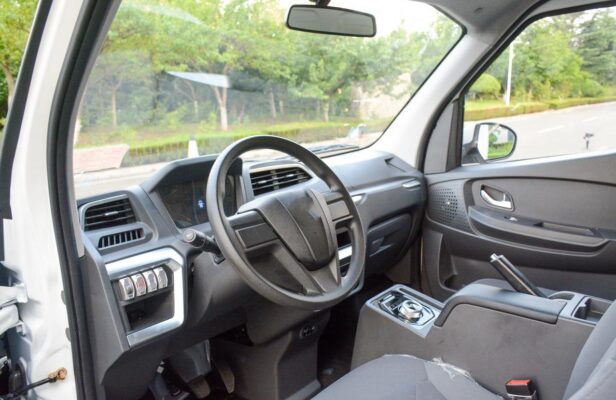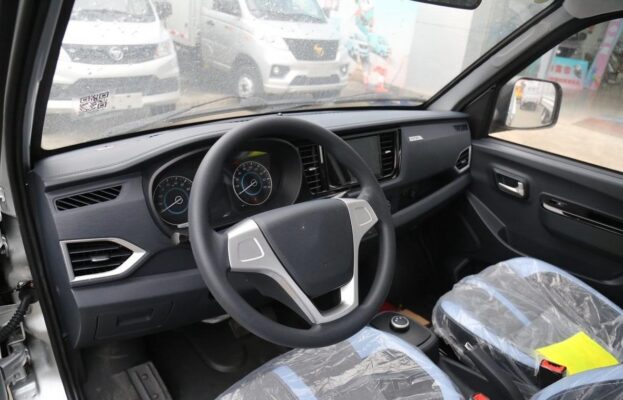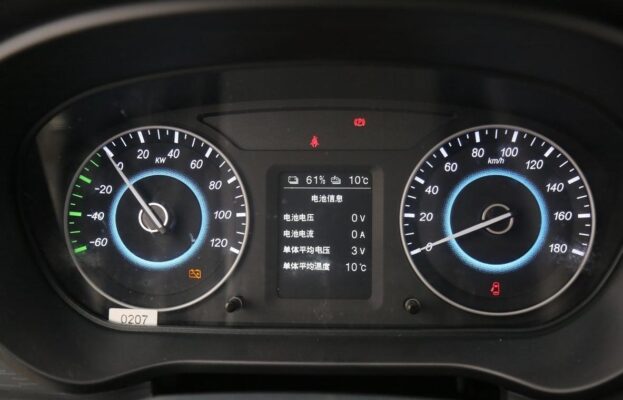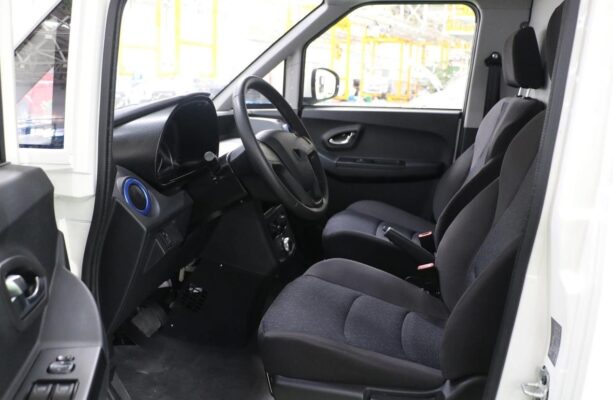Hluav Taws Xob Truck Paub
Automatic control of the accelerator and brake? ACC adaptive cruise is a bit smart
Muab lo rau los ntawm Hluav Taws Xob Truck
The daily routine of truck drivers, involving loading and unloading goods during the day and speeding along at night, ensures that they are more exhausted than the average worker. To enhance the driving experience for truck drivers, Jianghuai Heavy Trucks incorporates intelligent driving assistance technologies like ACC adaptive cruise in their high-end heavy trucks, aiming to alleviate driver fatigue to a significant extent. Now, the question arises: Do you know the correct way to activate the ACC adaptive cruise?

What is ACC adaptive cruise?
Conventional cruise control enables the vehicle to automatically accelerate and maintain the set speed without the driver constantly pressing the accelerator. This feature addresses the fatigue associated with prolonged accelerator pedal usage. tiam sis, it lacks the ability to analyze real-time road conditions or automatically adjust speed based on the driving distance. The driver still needs to control the brake to maintain a reasonable vehicle distance.
In contrast, ACC adaptive cruise is notably smarter. It employs sensors such as on-board radars and cameras to monitor the road traffic environment in front of the vehicle. Based on information like the relative distance and relative speed between the vehicle and the one in front, it controls the vehicle’s longitudinal speed by manipulating the accelerator and brake to maintain an appropriate and safe distance.
To put it simply, when using adaptive cruise to set the speed or following distance, the driver merely needs to handle the steering well, while the remaining braking and acceleration tasks are handled by the computer control system, instantly making driving more comfortable and straightforward.

Automatic acceleration and deceleration, driving is easier
When using ACC adaptive cruise, if the speed of the vehicle ahead is lower than the set speed of the current vehicle, the system automatically reduces the speed and maintains a safe distance from the vehicle in front. If there is no vehicle in front or if other vehicles are not in the same lane, the system accelerates back to the previously set speed. In essence, this operation typically requires minimal human intervention by the driver and is relatively secure.
Even if the vehicles in the front of the lane are constantly changing, ACC adaptive cruise promptly and rapidly re-identifies and adjusts the speed to maintain a safe vehicle distance.
Adaptive cruise, as an assisted driving function, is particularly suitable for use on highways, viaducts, or expressways. Nevertheless, any excellent equipment must be utilized correctly to be truly beneficial. Even if the vehicle is equipped with ACC adaptive cruise, we cannot lower our guard and must constantly monitor the road conditions.
To further guarantee safety, if there are other emergencies or the need to deactivate the ACC adaptive cruise, the driver simply needs to press the brake pedal to deactivate the function.

Let’s consider a real-life scenario. A truck driver is on a long highway journey, and traffic starts to slow down ahead. With ACC adaptive cruise engaged, the truck smoothly decelerates, maintaining a safe distance from the vehicles in front. The driver can focus more on observing the overall traffic flow and potential hazards on the sides of the road.
Now, imagine a situation where there’s a sudden obstruction on the road, such as debris or an animal. The driver’s vigilance, combined with the ability to quickly override the ACC system by braking, can prevent a potential accident.
It’s important to note that while ACC adaptive cruise offers significant assistance, it doesn’t replace the driver’s judgment and responsibility. Weather conditions, piv txwv, can affect the performance of the sensors. Heavy rain, fog, or snow can reduce the effectiveness of the radar and camera, making it crucial for the driver to be extra cautious.
In addition, the system might have limitations when it comes to recognizing certain unusual or complex road situations. Construction zones, where traffic patterns are often irregular, or roads with poor markings might pose challenges for the ACC system’s accurate operation.

Moreover, driver training and familiarization with the specific features and behaviors of the ACC system in their vehicle are essential. Different models and brands of trucks might have slight variations in how the ACC adaptive cruise functions, and understanding these nuances can make a significant difference in safe and efficient driving.
piv txwv li, some systems might have a more aggressive acceleration or deceleration profile, while others might be more gradual. Drivers need to adapt their driving style and expectations accordingly.
In the future, as technology continues to advance, we can expect even more sophisticated versions of adaptive cruise control. These might incorporate features like better integration with navigation systems to anticipate road conditions ahead, or the ability to communicate with other vehicles on the road for enhanced safety and traffic flow.
Xaus, ACC adaptive cruise is a valuable tool for truck drivers, but it should be seen as a complement to, rather than a replacement for, the driver’s full attention and driving skills. By using it correctly and remaining alert, drivers can enjoy a safer and less stressful driving experience on the road. So, truck drivers, make the most of this technology and stay safe on every journey.